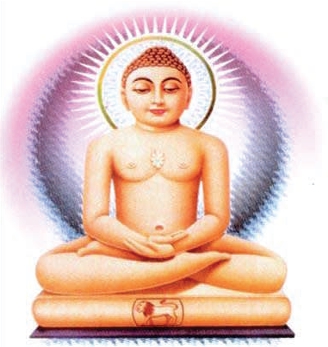
History and Doctrine of Tapa Gaccha
1. Doctrines
Tapa Gaccha is the most important and numerous image-worshipping Shvetambara sect. In medieval times within Jainism a number of gacchas, sub-groups, grew among the Shvetambaras. Differences between these gacchas are usually of a minor nature, and the formation of the gaccha was based mainly on local communities or through following a Jain holy man.
In the sixteenth century the varied writings of the Tapa monk Dharmasagara provided the main source for the issues in medieval Shvetambara sectarianism. Dharmasagara wished to establish the central and unique position of the Tapa Gaccha and he exposed what he thought were flaws in the lives and doctrines of other Jain acaryas and their lineages. Tapa means 'Ascetism' and the doctrine of the gaccha is an emphasis on the original ancient ascetic values of Jainism.
2. History
The Tapa Gaccha was founded by Jagaccandra Suri in 1228, an elusive historical figure who broke from the Vata Gaccha because of its laxity. Tapa tradition sees the Vata Gaccha as the mainstream gaccha. Because of Jagaccandra's austerities, the king gave him the epithet Tapa, Ascetism, which was then applied to the gaccha.
The first clear historical figure in the gaccha was Hiravijaya Suri in the sixteenth century. As head of the Tapa Gaccha he organised a massive pilgrimage to Mount Satrunjaya in 1593 and consecrated a temple to Rishabha there, and this event most probably caused the great increase of temples and shrines on the holy mountain. Hiravijaya was an important influence at Akbar's court, and after hearing of Jain compassion for all life, the emperor freed caged birds and banned the slaughter of animals on the Shvetambara festival of Paryushan. He spent three years at Agra, and when he left his disciple Shanticandra also had a good influence on Akbar, causing an edict banning the killing of animals.
At this time the monk Dharmasagara wrote his controversial and aggressive works, the most important being the Sun in the Eyes of Owlish Heretics. He attacked Digambaras, the followers of Lonka, and the Kharatara Gaccha. Dharmasagara said that teachers who started new lineages and changes in ritual were setting themselves up as equals of the Jinas. There could only be one tirtha, the Jain community, based on Mahavira with lineal descent from his disciple Sudharman. The Kharatara Gaccha adhered to the sacred texts. This is not enough, said Dharmasagara, there must be a proper teacher lineage. And to him, the true uninterrupted lineage was that of the Tapa Gaccha.
The Tapa Gaccha and the Kharatara Gaccha remained in conflict for a considerable time, especially over Mount Satrunjaya. The gods were also involved. A Kharatara story of the end of the sixteenth century is of a suri, a prominent teacher, named Jinacandra, who won power over Manibhadra, the tutelary deity of the Tapa Gaccha. In the same century the suri Anandavimala of the Tapa Gaccha invoked Manibhadra to defeat the god Bhairava who was summoned by the Kharataras.
In the nineteenth century numbers of Sthanakvasi monks defected to Shvetambara image-worshipping sects. The most important of these was Buterayaji and his pupil Atmaramji. Atmaramji (1837-96) became also known as the Tapa Gaccha teacher Vijayananda Suri, who helped revive the image-worshipping ascetic tradition. He also assisted many Western scholars studying Jainism.
3. Symbols
Jain image-worship may have started with the cult of yakshas, spirits living in sacred trees. Early Jina-images on ayagapata, stone tablets with auspicious symbols, sit under a tree, thus facilitating assimilation of the yaksha cult. One view is that wooden and terracotta yakshas were the prototypes of Jina-images. The yaksha Manibhadra has lasted a long time in Jainism. At Mathura he protected caravans. Since about the fourteenth or fifteenth century, Manibhadra has been the tutelary deity of the Tapa Gaccha.
The rajoharana, the small broom carried by Jain monks, nuns, and ascetics to brush small insects out of their path or where they will sit, has the handle covered with a pato, an elaborate embroidered covering. These vividly coloured textiles started to be made in Gujarat in the early or mid-nineteenth century. They are primarily made by nuns of the Tapa Gaccha while in menstrual isolation. Patos are normally kept covered by plain white cloth to conform with the white -clad Shvetambaras. The pato is a very private possession, only seen during the daily ritual of padilehana, the examination of clothes and personal objects for trapped living creatures. A pato has various decorative symbols, the eight auspicious signs being the oldest and most traditional: the auspicious solar symbol, auspicious srivatsa mark, water-filled pot, auspicious seat, a pair of fish, mirror, powder box, and auspicious whorl. These may be set around a lotus medallion flanked by floral motifs. The outer borders are rows of large white stitches which are symbolic: two vertical rows symbolise non-attachment and lack of hatred, and five horizontal rows symbolise the five Jain monastic vows - non-violence, truthfulness, non-stealing, celibacy, and non-possession. The ascetics use red alms-bowls.
Ascetics: 3,680 nuns, 1,179 monks (1986 CE) Gujarat and Rajasthan